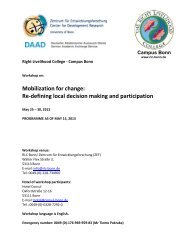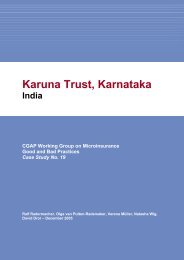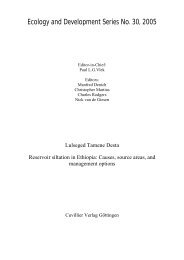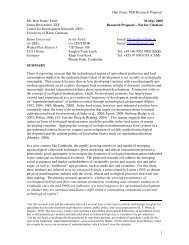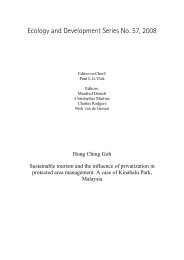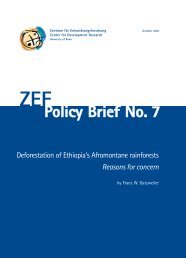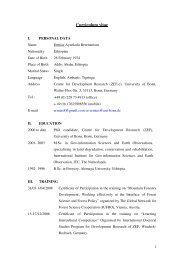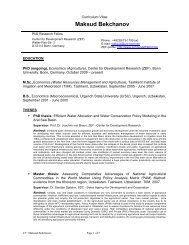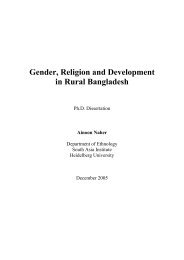Ecology and Development Series No. 10, 2003 - ZEF
Ecology and Development Series No. 10, 2003 - ZEF
Ecology and Development Series No. 10, 2003 - ZEF
- No tags were found...
Create successful ePaper yourself
Turn your PDF publications into a flip-book with our unique Google optimized e-Paper software.
General introductionunfavorable change in the frequency of adaptive or commercially important alleles.Deforestation may result in loss of the wild populations or isolation of populations, whichconsequently leads to a loss of genetic diversity unique to the lost population or to areduced gene flow among populations then isolated.Most of the montane rain forest areas in SW Ethiopia have been deforested, <strong>and</strong>the remaining forest areas are highly fragmented. Hence, there is an urgent need toconserve the wild coffee <strong>and</strong> its forest habitat in the remnant forest areas. This can beachieved by establishing coffee gene reserves. A gene reserve is an in situ conservationmethod to preserve the genetic resources within the natural habitat (Maxted et al. 1997).The Man <strong>and</strong> Biosphere reserve of UNSECO is considered to be a good conservationstrategy for sustainable use <strong>and</strong> conservation of plant genetic resources (UNESCO-UNEP1984; Maxted et al. 1997). This approach enables the classification of the forest l<strong>and</strong>scapein which the target genetic resources are found into different management zones, <strong>and</strong> theallocation of non-damaging uses by human beings in some parts while protecting core partsof the reserve in order to meet the conservation objectives (IUCN 1994; Hepcan 2000).In order to establish a gene reserve for in situ conservation of coffee in themountain rain forests of SW Ethiopia, it is essential to identify the location <strong>and</strong> distributionpatterns of the wild coffee populations <strong>and</strong> other associated plant species. To achieve this,one has to answer questions such as: What species of plants occur along with coffee <strong>and</strong>how abundant are these species? What does the structure of the forest look like? Is thereany kind of relationship or association among plant species in the forest ecosystem, i.e.,formation of communities? Which plant communities are important for conservation? Whatis the distribution pattern of coffee, plant communities <strong>and</strong> overall diversity within theforest l<strong>and</strong>scape with respect to different topographic features or environmental gradientsof the forest ecosystem? How does human use of the forest ecosystem affect thecomposition <strong>and</strong> structure of the forest? What is the implication of this disturbance due tohuman use on the forest ecosystem, on the coffee population <strong>and</strong> on the population of otherplant species? These are the leading questions for the present study.Vegetation analysis has evolved from a mere descriptive analysis of the list ofmajor plant species occurring in particular localities (Clements 1916) to a more rigorous5



